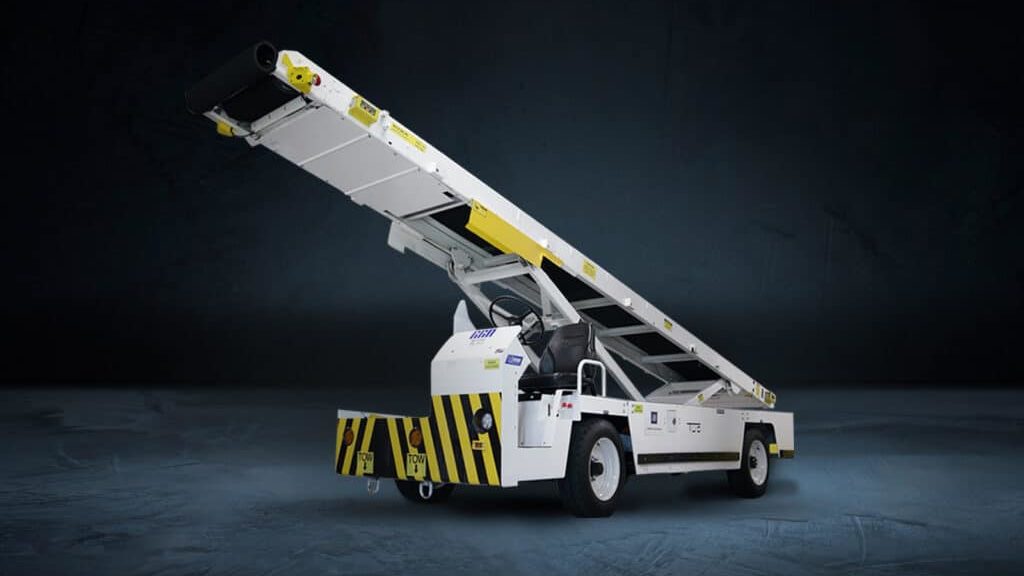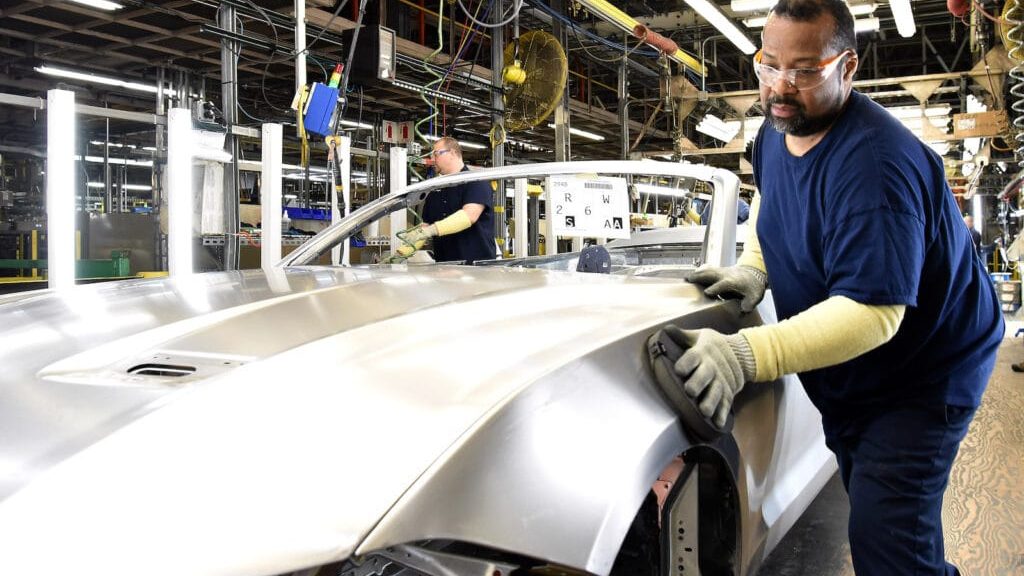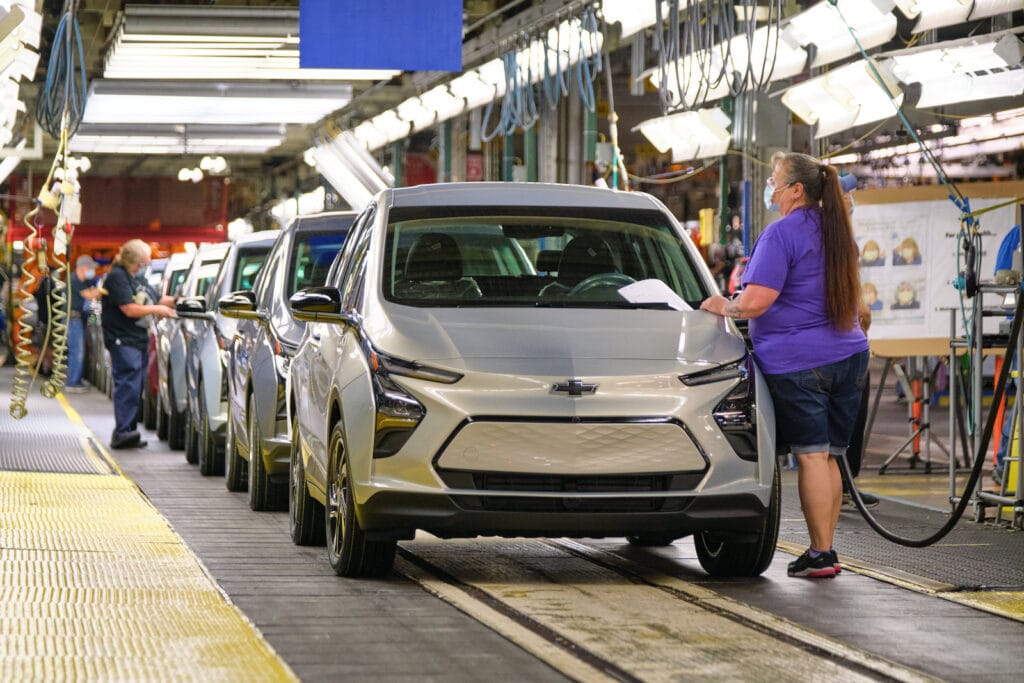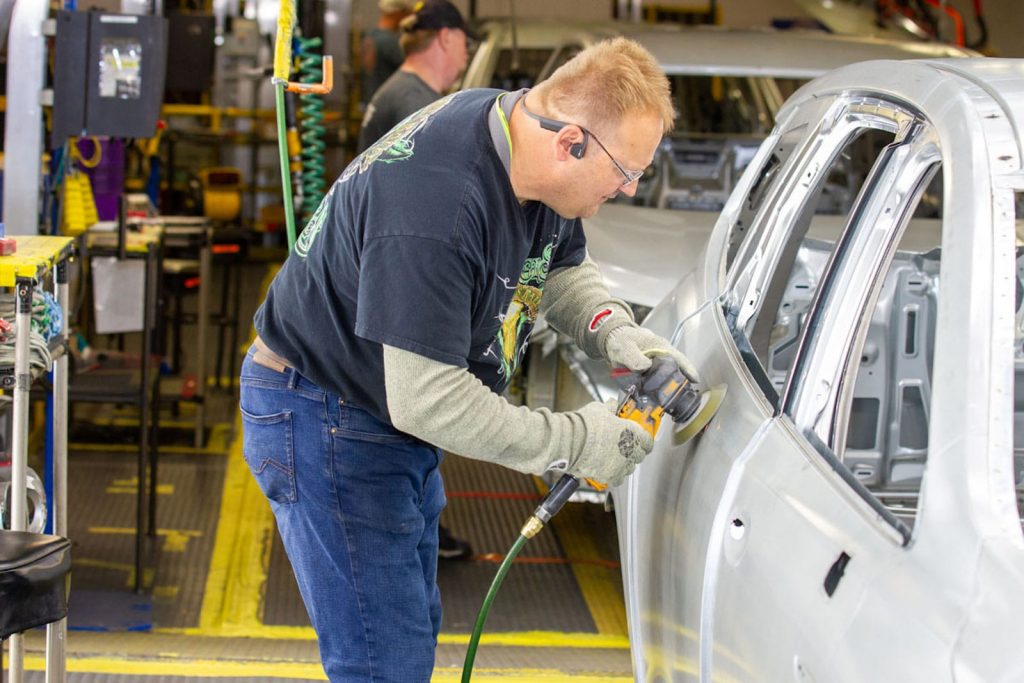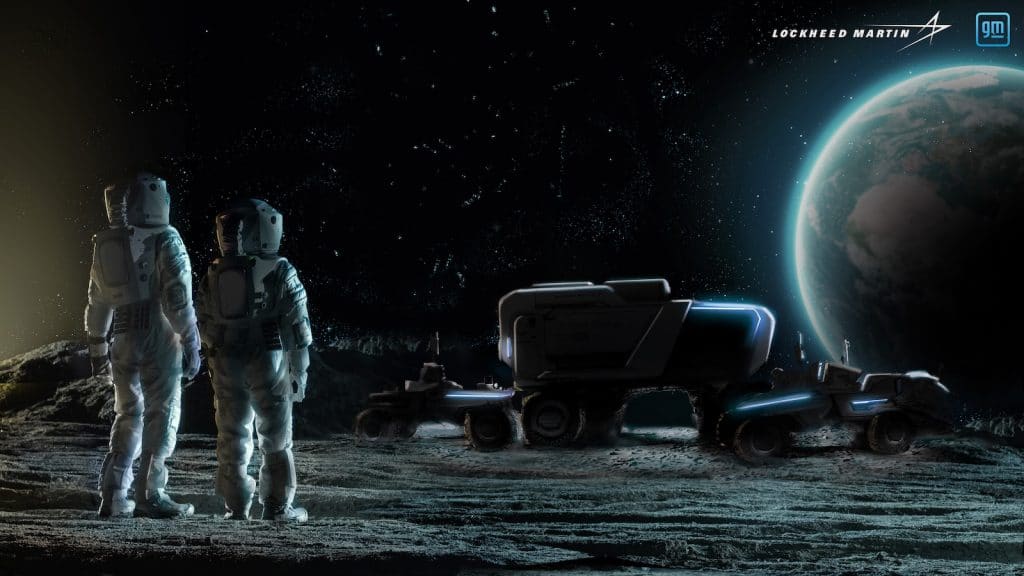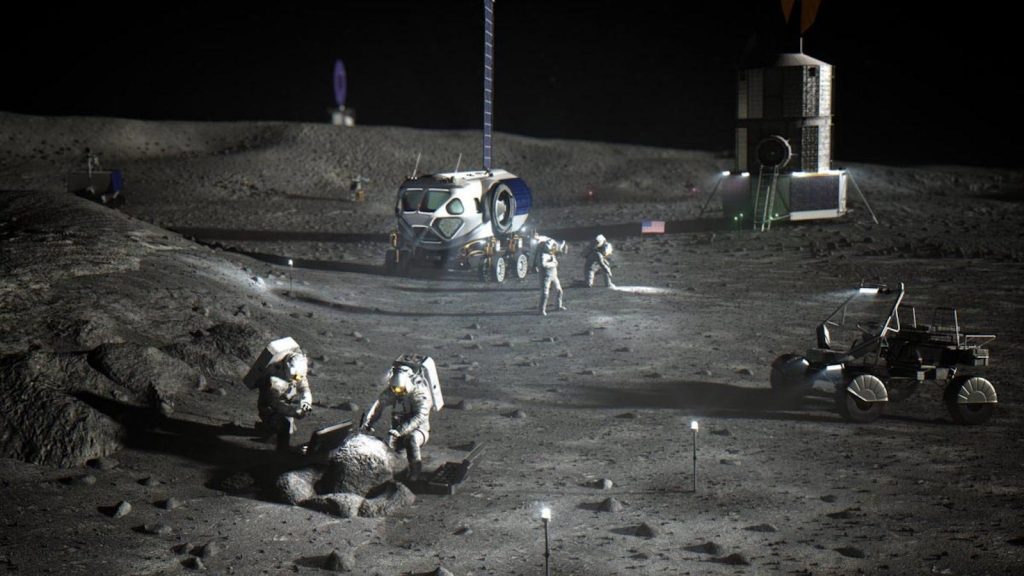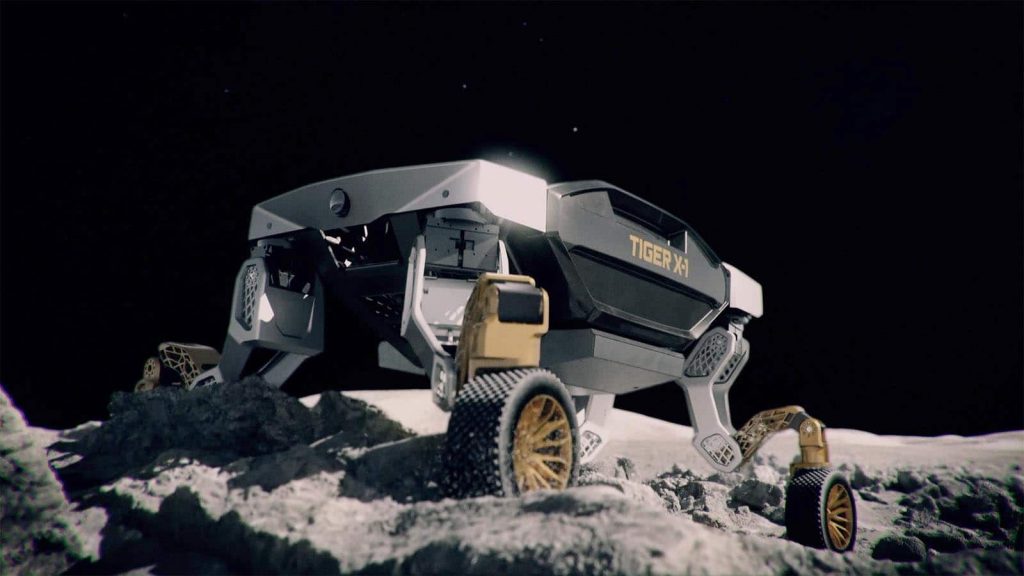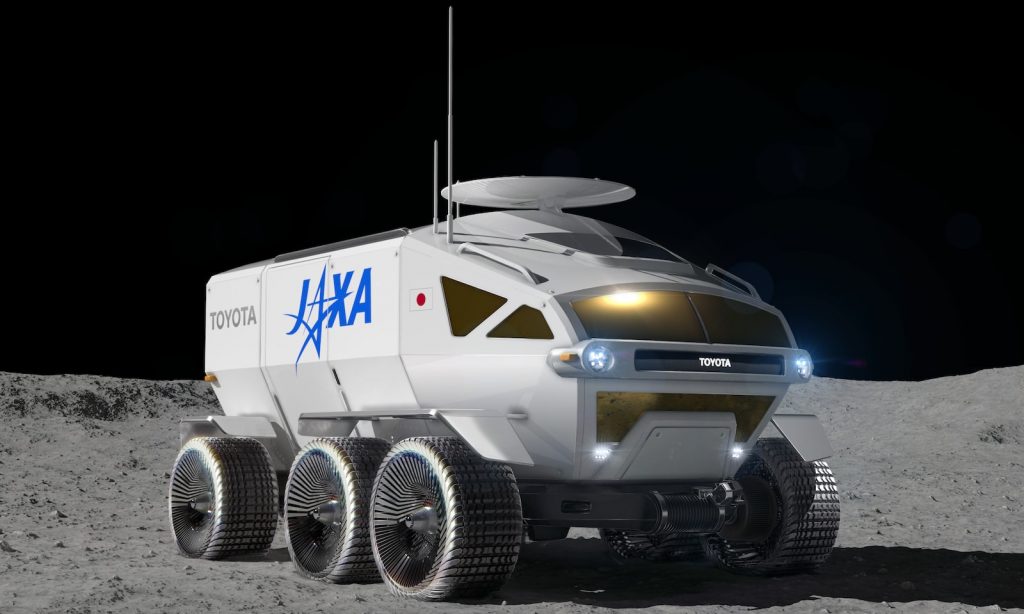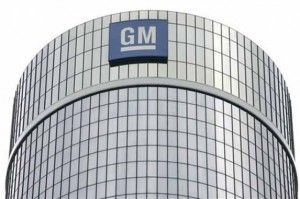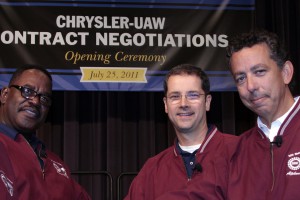As part of a $37 billion program, General Motors plans to bring at least 30 battery-electric vehicles to market by mid-decade — but it is expanding its electrification strategy to power up pretty much anything “already on the road,” as well as on the water, it announced on Wednesday.

The largest of the Detroit automakers’ Electric Connect and Cruise eCrate systems will allow owners to swap out their conventional gas engines in classic vehicles like the Camaro and E-10 pickup for battery-drive technology. GM also is looking to power up cargo tractors and other airport gear, while also working up ways to bring electric propulsion to the marine industry.
“GM has an established strategy, network of integrators and co-development agreements to apply an extensive array of components and solutions to a broad range of customers and use cases,” said Travis Hester, GM vice president of Electric Vehicle Growth Operations, in a statement Wednesday.
The carmaker estimates there’s a “total addressable market” for swapping conventional drive systems for battery power that could approach $20 billion by 2030.
“As companies across many industries look to reduce their environmental impact, GM is uniquely positioned to serve as a leader not only through exciting new EVs across our brands, but through additional technology applications,” said Hester, “and we look forward to bringing customers — existing and new — along with us on our zero-emissions journey.”
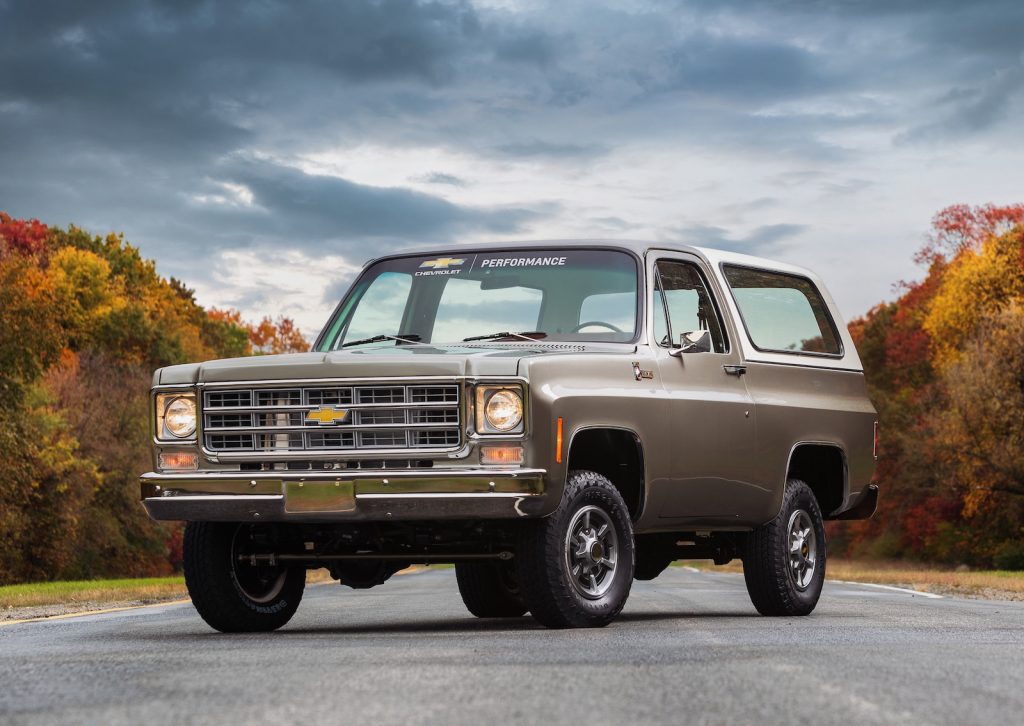
Converting to electric
Demand for conversion technology is already on the rise. There’s been a flood of startups converting classic vehicles, including vintage Camaros, Porsches, Volkswagens and Land Rovers, to run on battery power.
GM targeted the conversion market with the launch of the eCOPO Camaro project car at the SEMA Show several years back, and has revealed other project cars like Project X and the 1977 K-5 Blazer. It is getting ready to provide what are essentially plug-and-play packages, like the Cruise eCrate and Electric Connect, to simplify the process. The goal is to allow owners and conversion companies to make a swap with a minimum of effort.
The Detroit automaker isn’t the only one sensing an opportunity here, however. Ford recently demonstrated the potential for its own Mach-E crate motors, which, as the name implies, uses hardware and software borrowed from its Mustang Mach-E battery-electric SUV. The conversion package can be plugged into classic products such as a 1978 Ford F-100 pickup. Volkswagen and Tesla have also gotten into the game, the latter automaker’s electric drive technology used by one conversion fan on a Rolls-Royce once owned by Johnny Cash.
Multiple applications for electric motors
But GM’s strategy isn’t limited to road-going vehicles.
It’s teaming up with Textron Ground Support Equipment Inc., a Textron subsidiary, to power up ground support equipment like the cargo and baggage tractors, belt loaders and Tug equipment found at commercial airports. Electrifying those vehicles promises to reduce emissions, as well as operating costs, while improving reliability, experts claim.
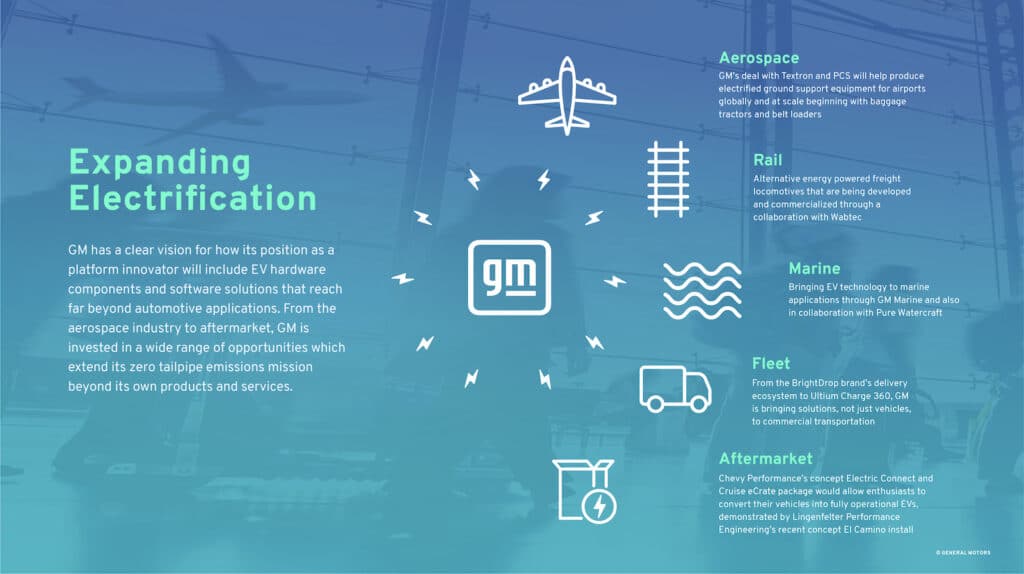
Commercial fleets, in general are showing strong interest in making the switch to battery power. GM this month began delivering the first of its BrightDrop delivery vans, joining competitors like Ford and Rivian in a market that could rapidly grow this decade, according to industry forecasts.
The opportunity to electrify isn’t limited to ground vehicles, however. A number of manufacturers are looking at ways to harness battery and hydrogen fuel-cell technology for other transportation and cargo applications. Rolls-Royce recently set a speed record with an aircraft outfitted with one of its drive systems. Airbus just released plans for a hydrogen turbofan system.
GM sees big opportunities coming in the marine world. It recently announced a strategic investment in the Seattle-based Pure Watercraft. The move, the automaker said, “represents an opportunity to bring EV technology to the marine industry and help preserve enjoyment of the outdoors for future generations. Together, the two companies will develop and commercialize battery electric watercraft, to accelerate the transition to electric mobility.”
GM also has been exploring ways to electrify the rails. Last June it announced another partnership with Wabtec, one of the largest providers of freight locomotives. Under a non-binding agreement, the automaker will provide both battery and hydrogen fuel-cell systems for prototypes like the Wabtec FLXdrive. Eventually, the technology could replace the conventional diesel-hybrid systems that dominate the rails today.

